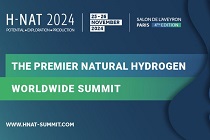 Since 2021, the H-NAT conference has been attracting increasing interest among geologists, and its fourth edition, held in Paris on November 25-26, 2024, turned out to be the largest and most significant scientific meeting dedicated to natural hydrogen (https://www.hnatworldsummit.com/).
Since 2021, the H-NAT conference has been attracting increasing interest among geologists, and its fourth edition, held in Paris on November 25-26, 2024, turned out to be the largest and most significant scientific meeting dedicated to natural hydrogen (https://www.hnatworldsummit.com/).

Over 300 delegates gathered at the conference and the accompanying exhibition debated the opportunities for the development of this new branch of geology. The conference was also attended by delegates from the Polish Geological Institute – National Research Institute: Krystian Wójcik and Marcin Łojek, who presented the state of knowledge about natural hydrogen in Poland, emphasizing its importance on the Polish and European energy market and drawing a plan for the exploration and research.
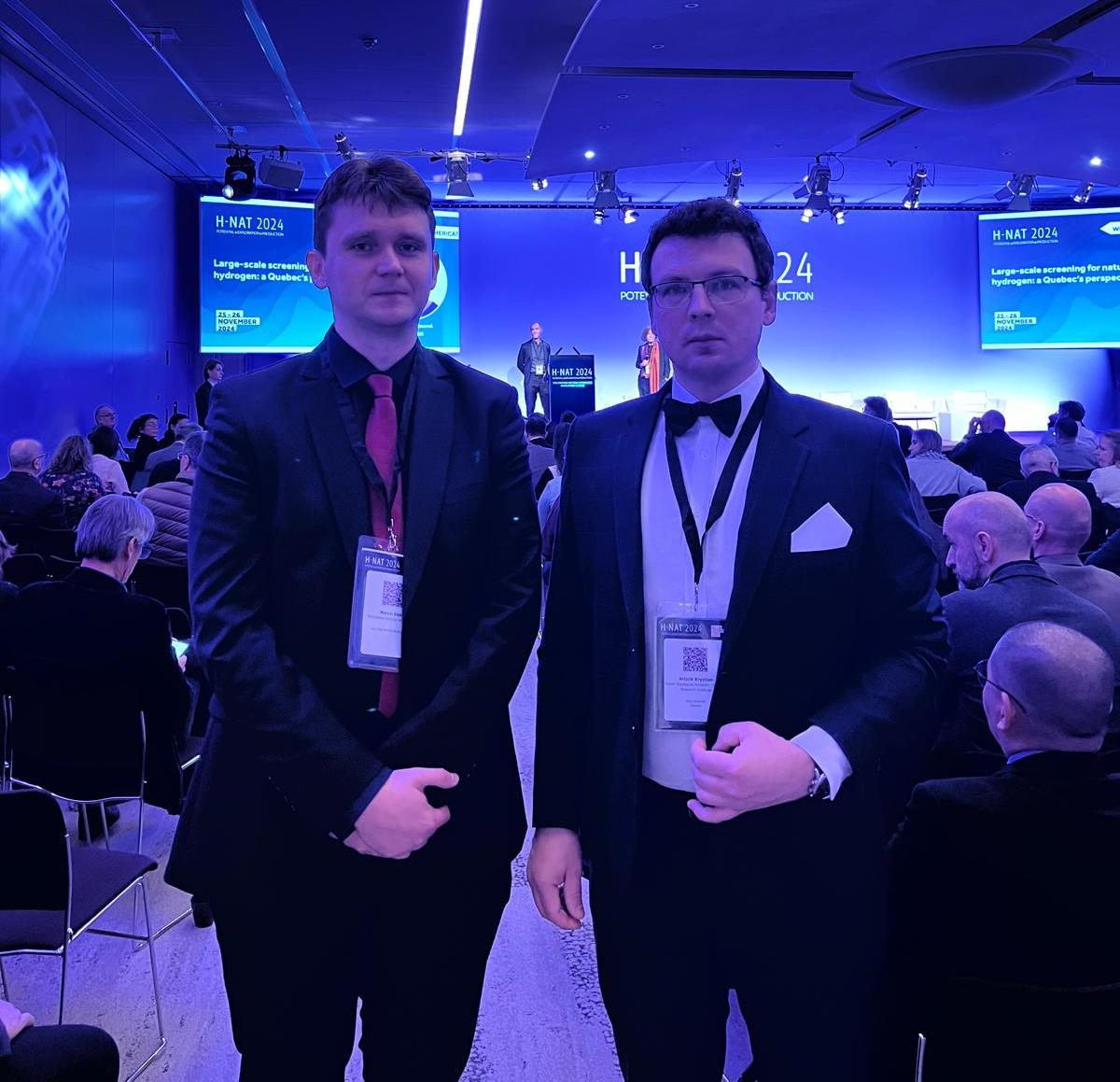
PIG-PIB delegates (from the left): M.Sc. Marcin Łojek and Dr. Krystian Wójcik at the H-NAT conference in Paris
Among the representatives of the world of science, industry and politics, a large group were Poles, including Dr. Eng. Anna Twaróg and Prof. Henryk Sechman from the AGH University of Science and Technology in Krakow, who discussed about hydrogen symptoms in the Carpathian Foredeep, as well as Dariusz Strąpoć from SLB Clamart, who presented a poster devoted to the hydrogen generation during the process of rock drilling. The fundamental problem, however, is the supply of raw materials, and here geology can play a role.
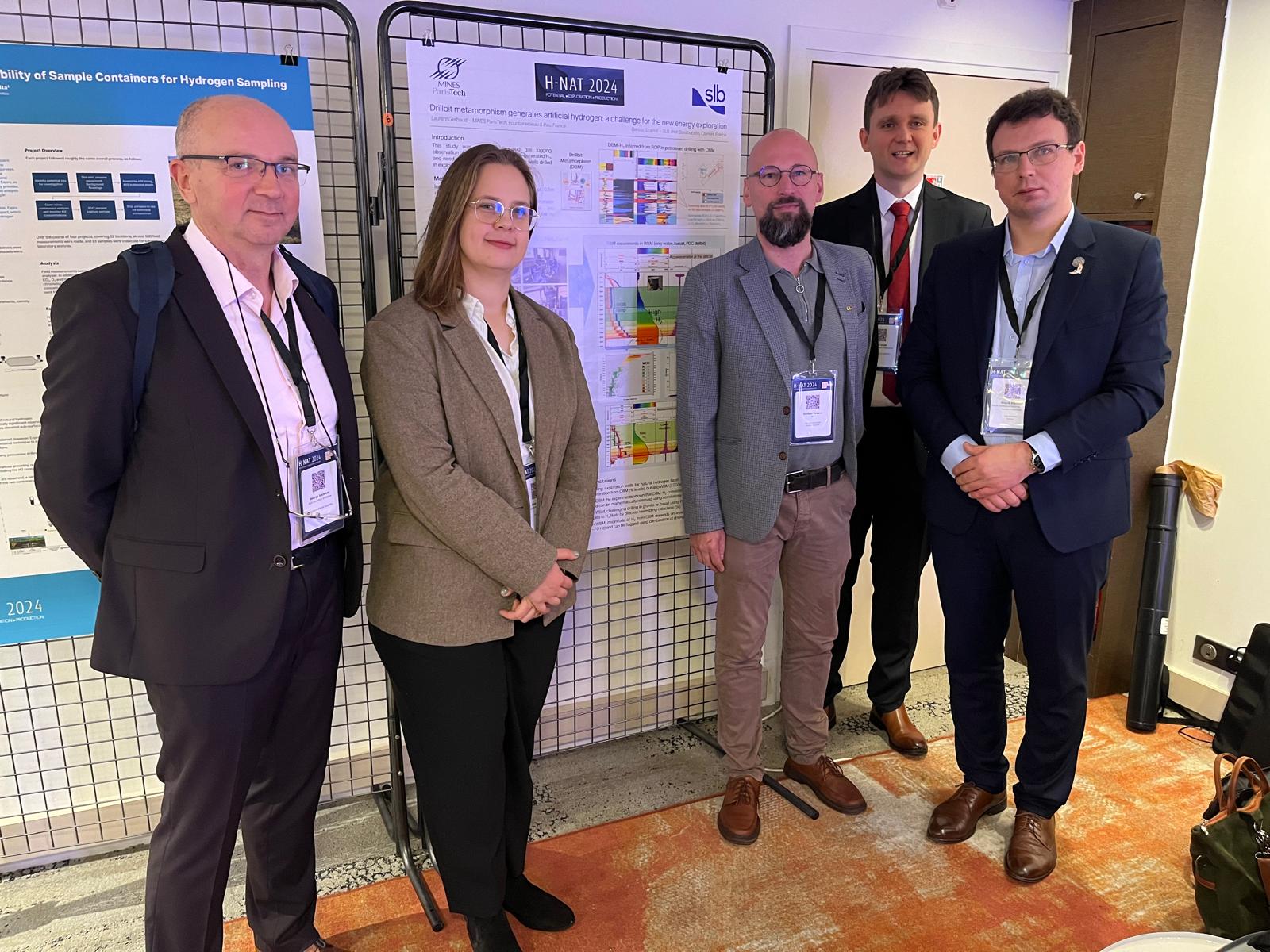
Hydrogen gasification of drilling mud or formation water observed during drilling is often the effect of mechanical crushing of rocks rather than natural hydrogen outflows from the gas-bearing formations. This is evidenced by the research of Dariusz Strąpoć (in the middle), presented during the poster session. In the photo (from the left): Prof. Henryk Sechman (AGH), Dr. Eng. Anna Twaróg (AGH), Darius Stąpoć (SLB Clamart), M.Sc. Marcin Łojek (PGI-NRI), Dr. Krystian Wójcik (PGI-NRI)
The search for natural hydrogen, also known as white hydrogen or geological hydrogen, is a difficult challenge. Until recently, such hydrogen was still rarely observed in nature, despite the fact that it constitutes a significant percentage of the composition of gases emitted during volcanic eruptions or outflows in deep-sea hydrothermal vents. There are also increasingly frequent reports of its seepage on the surface, which have also recently begun to be noticed in Poland... However, the question remains, which was the leitmotif of the conference in Paris, whether these and other processes occurring in the natural environment can lead to the creation of natural hydrogen deposits, the exploitation of which will be economically profitable. Or – on the other hand – whether there are methods that will initiate and then intensify the generation of hydrogen from rocks, which could be stored in one way or another. There are hopes, as evidenced by the discovery of a gas deposit in the village of Bourakebougou in Mali, in which the hydrogen content reaches 98%.
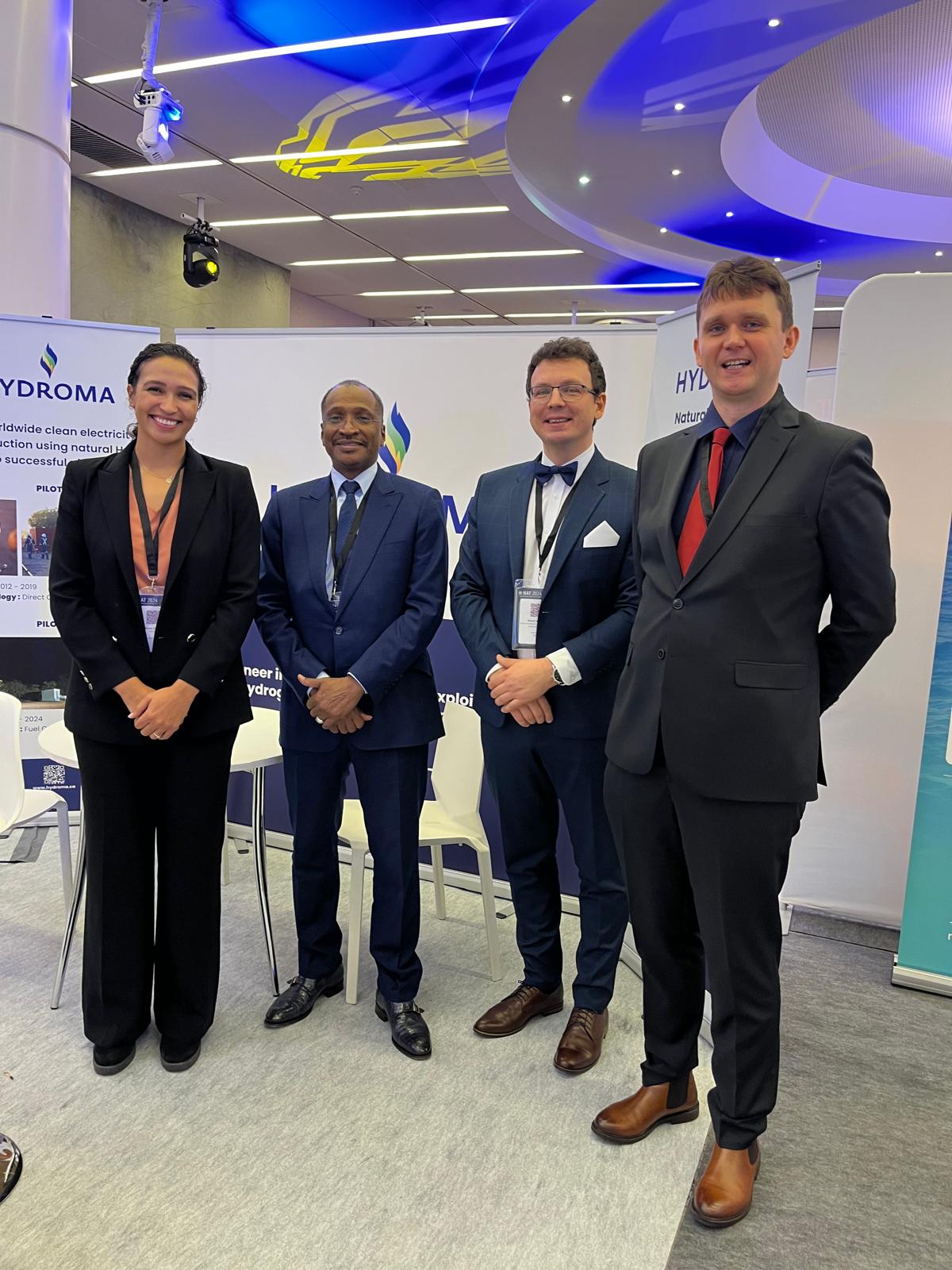
Hydroma stand and its founder and owner Aliou Diuallo (second from left) – operator of the world's only documented and exploited hydrogen deposit in Bourakebougou, Mali (see Eric Hand's 2023 article: Erica Handa, 2023 r. and Omar Maiga et al. 2023 publication Omara Maigi i in., 2023 r.)
On May 15, 2023, FDE, a French independent multi-energy company, announced the discovery of the world's largest deposit of white hydrogen in Lorraine, with resources estimated at up to 46 million tons. This news electrified the scientific community and energy companies in Europe, giving rise to something that can probably be called a hydrogen boom. Further projects developed in Aquitaine, the Pyrenees, and Brittany are making France a leader in natural hydrogen exploration in Europe, as exemplified by the organization of the H-NAT convention in Paris. But Poland is not lagging behind either: in January 2025, the Polish Geological Survey will begin the works dedicated to determine the prospects for the accumulation of natural hydrogen in Poland. There are many reasons for this: hydrogen often appeared as a gas dissolved in water and free gas obtained during formation tests in wells, and it is also a frequent, sometimes significant admixture in Polish natural gas deposits.
Its genesis is also an intriguing problem. Dr. Krystian Wójcik talked about these issues during his lecture as part of the conference session entitled "Regulation and growth of the ecosystem". The problems and hypotheses he poses will be available for detailed review in the November issue of the Przegląd Geologiczny magazine.
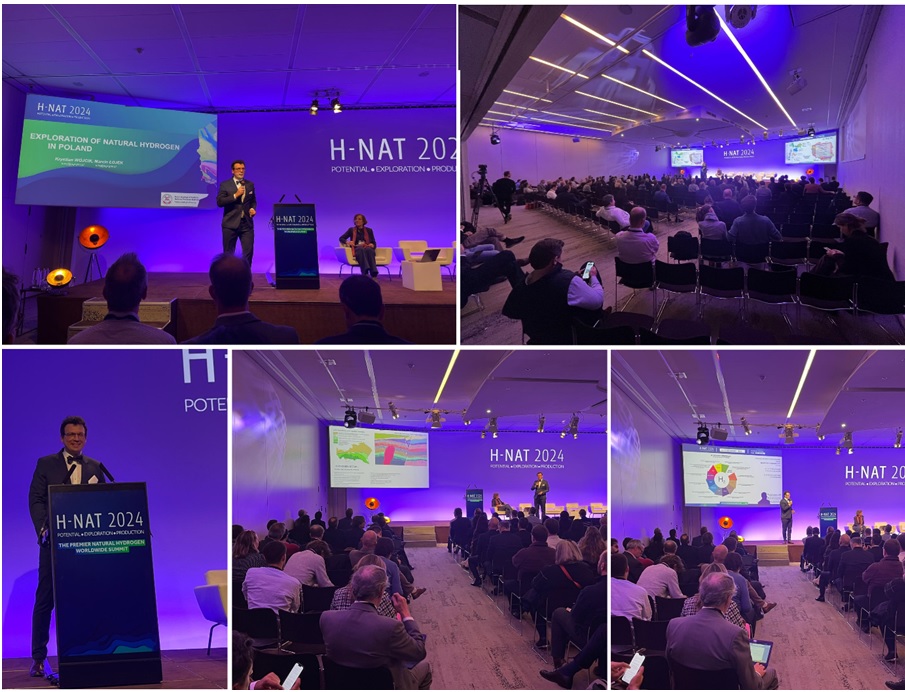
Exploration of natural hydrogen in Poland – a few photos from the lecture by Dr. Krystian Wójcik (PGI-NRI) about the plans of natural hydrogen exploration in Poland, which he was talking anbout during the "Regulation and growth of the ecosystem" – summarizing session of the H-NAT conference in Paris
It is worth emphasizing that the work to be carried out by the Polish Geological Survey was initiated in 2022 by the then Department of Geology and Geological Concessions of the Ministry of Climate and Environment. This is not the only natural hydrogen research project in Poland, however, it is worth mentioning here the Polish Initiative for Natural Hydrogen:https://www.pgi.gov.pl/aktualnosci/display/15710-pig-pib-czlonkiem-geo-hydrogen-czyli-polskiej-inicjatywy-na-rzecz-naturalnego-wodoru.html
Text and photos: Krystian Wójcik, Marcin Łojek
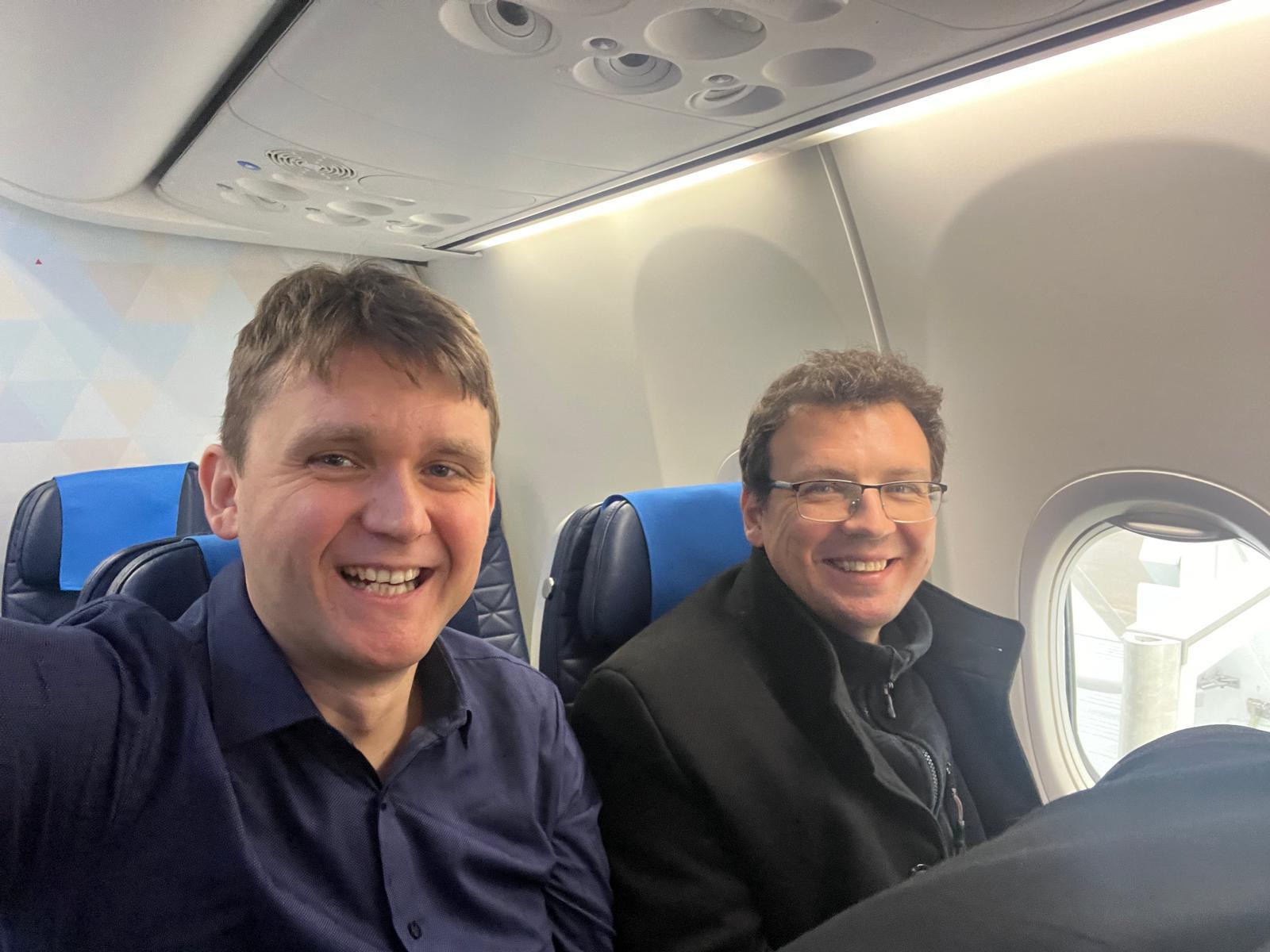
L'hydrogène sur les… Champs Elysées…














 PGI-NRI offer
PGI-NRI offer Mineral resources of Poland
Mineral resources of Poland  Oil and Gas in Poland
Oil and Gas in Poland 




 Subscribe to RSS Feed
Subscribe to RSS Feed